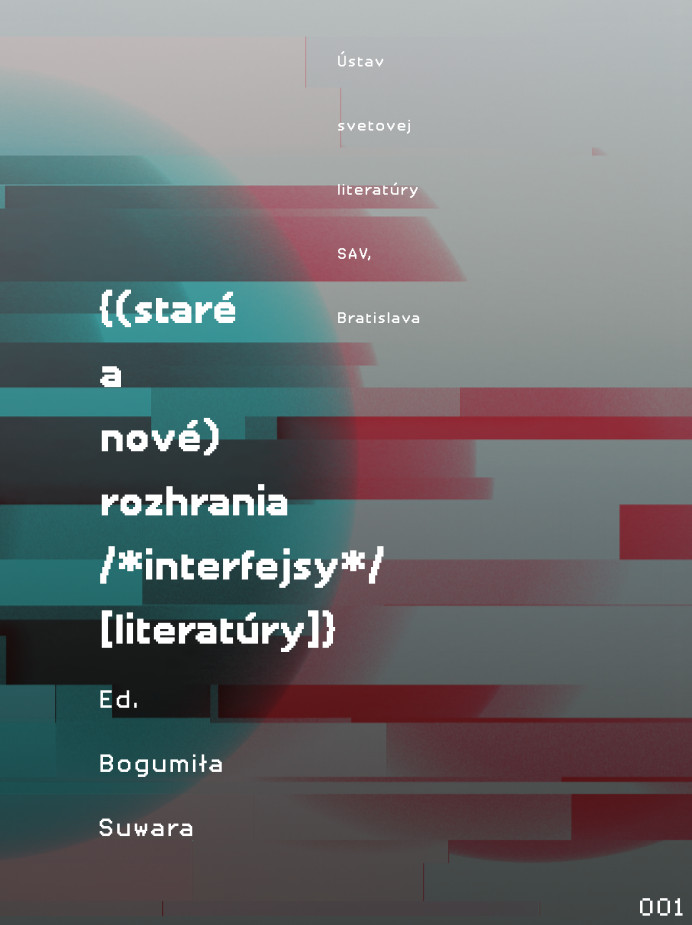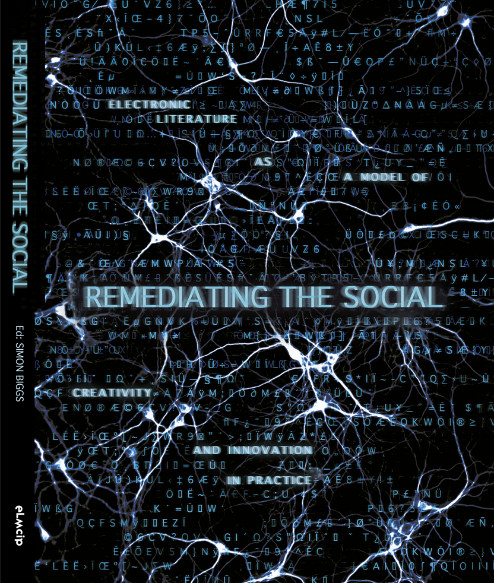Bogumiła Suwara (ed.): {(staré a nové) rozhrania /*interfejsy*/ [literatúry]} (2014) [SK, CZ]
Filed under book | Tags: · electronic literature, interface, literature, technology, text, theory

Collected papers by Slovak, Czech and Polish theorists on the theme of interfaces in electronic literature and (post)digital culture. With English abstracts.
“Kolektívna monografia je príspevkom do vedeckého diskurzu na prieniku literárnej teórie, estetiky, kulturológie a mediálnych štúdií. Prostredníctvom štúdií teoretičiek a teoretikov zo Slovenska, Českej republiky a Poľska upozorňuje na problematiku interfejsov v elektronickej literatúre a (post)digitálnej kultúre. Texty prinášajú nový pohľad na vývojové trendy umenia vrátane literatúry s prihliadnutím na súčasné metódy výskumu a najnovšie teoretické poznatky v danej oblasti.”
With texts by Andrzej Adamski, Krištof Anetta, Joanna Ciesielska, Zuzana Husárová, Jana Kostincová, Kateřina Piorecká, Karel Piorecký, Mariusz Pisarski, and Bogumila Suwara.
Publisher SAP & Ústav svetovej literatúry SAV, Bratislava, 2014
ISBN 9788089607303
239 pages
PDF (11 MB)
Comment (1)Espen J. Aarseth: Cybertext: Perspectives on Ergodic Literature (1997)
Filed under book | Tags: · computer games, electronic literature, ergodic literature, hypertext, literary theory, literature, text

Can computer games be great literature? Do the rapidly evolving and culturally expanding genres of digital literature mean that the narrative mode of discourse—novels, films, television series—is losing its dominant position in our culture? Is it necessary to define a new aesthetics of cyborg textuality?
In Cybertext, Espen Aarseth explores the aesthetics and textual dynamics of digital literature and its diverse genres, including hypertext fiction, computer games, computer-generated poetry and prose, and collaborative Internet texts such as MUDs. Instead of insisting on the uniqueness and newness of electronic writing and interactive fiction, however, Aarseth situates these literary forms within the tradition of “ergodic” literature—a term borrowed from physics to describe open, dynamic texts such as the I Ching or Apollinaire’s calligrams, with which the reader must perform specific actions to generate a literary sequence.
Constructing a theoretical model that describes how new electronic forms build on this tradition, Aarseth bridges the widely assumed divide between paper texts and electronic texts. He then uses the perspective of ergodic aesthetics to reexamine literary theories of narrative, semiotics, and rhetoric and to explore the implications of applying these theories to materials for which they were not intended.
Publisher John Hopkins University Press, 1997
ISBN 0801855799, 9780801855795
203 pages
review (Darren Tofts, Mediamatic)
wikipedia
publisher
google books
Simon Biggs (ed.): Remediating the Social (2012)
Filed under book, proceedings | Tags: · art, code, code poetry, digital poetry, electronic literature, literature, poetry

“The Remediating the Social book includes full proceedings of next week’s conference “Electronic Literature as a Model for Creativity and Innovation in Practice” in Edinburgh, including full texts of essays and full color artist’s pages with documentation of works commissioned for the Remediating the Social exhibition.”
Publisher University of Bergen, Department of Linguistic, Literary and Aesthetic Studies, Bergen, Norway
Creative Commons Attribution-ShareAlike 3.0 Unported
ISBN 97882999089-0-0
158 pages

